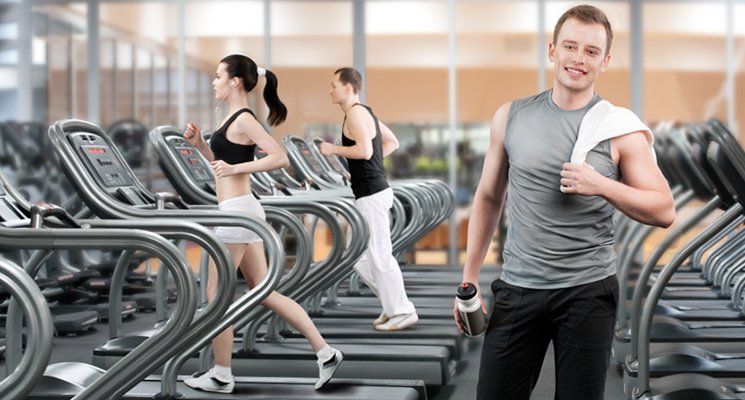Maybe 2015 was the year of the treadmill. The cardio-room classic was in the news a lot last year, made prominent especially because of the tragic death of Dave Goldberg, who was the CEO of SurveyMonkey and the husband of Facebook’s Sheryl Sandberg. Goldberg was exercising on a treadmill at a gym when he lost his grip on the railings, fell backward, and fatally hit his head. After that, news outlets and social media channels were buzzing with concerns about treadmill safety, and stats from the government’s Consumer Products Safety Commission were frequently cited: 24,400 people in the United States visited hospital emergency rooms because of treadmill accidents in 2014. Between 2003 and 2012, thirty treadmill-related deaths were reported. Nevertheless, at the end of the year, IHRSA released a Consumer Trend Report which found that treadmills are — still, after many decades and many accidents — the most popular form of equipment-based exercise among health club members.
So maybe every year is the year of the treadmill. It’s interesting to consider why the machine remains so popular, especially in the face of new exercise technologies and new research about more efficient ways to exercise. The first thing to note is that the treadmill has a long history, much longer than most people realize: The first treadmills were invented around 4,000 years ago, one of man’s earliest machines. They were used to transport water; much later they were put to work powering dough-kneading machines, bellows, turbines, and other industrial equipment. In the 19th-century, as technology developed and treadmills were no longer the most efficient machines in the factory, they were used as devices of punishment: Prisoners in European countries were made to walk them as retribution for their crimes.
Of course, sometimes they still feel like a punishment. But exercisers keep coming back to them. They became what they’re known as in their current incarnation in the late 1960s, when a mechanical engineer, William Staub, read the book Aerobics, by Dr. Kenneth H. Cooper. The home treadmill was born, and over the past forty or so years it has evolved into the machine everyone keeps coming back to. So what does keep them so popular? First of all, the time-savings factor. Obviously, home-users can just hop on or off, and even walking on a treadmill at a moderate pace for 20 minutes a day can help them stay in shape. At your facility, same thing: easy in, easy out — there’s very little time lost for a member who just wants to check in, bang out the treadmill routine, and get on with his or her day. Second, there’s versatility. Treadmills stay interesting because you can increase or decrease the intensity at which you use them, change the incline or speed, and experience a whole range of exercise activities with one relatively simple piece of equipment. Moreover, of course, exercisers can use them in any weather. Another thing treadmills allow for that most other pieces of equipment do not is multitasking.
Users can watch television, send emails, read magazines, internet shop—any number of tasks can be performed while a workout still gets accomplished. And, finally, they’re easy to use. Unlike some exercise equipment, treadmills are simple; almost anyone can get on one and start using it without the help of an expert.
So, why is it worthwhile to ponder all this? Given the enduring popularity of treadmills, it’s important to consider regularly their role in your facility. Do you have enough of them? Are they simple enough? Up-to-date enough? Have you ever conducted a survey to suss out how your members most like to use them, or simply spent a few hours observing patterns of use? Do your treadmills stand in a sad row in some corner of your cardio room, or are they given the prominence their popularity suggests that they deserve? Use IHRSA’s latest Consumer Trend Report as a prompt to assess the treadmill situation at your facility, and figure out how to more actively use treadmills to your advantage.
